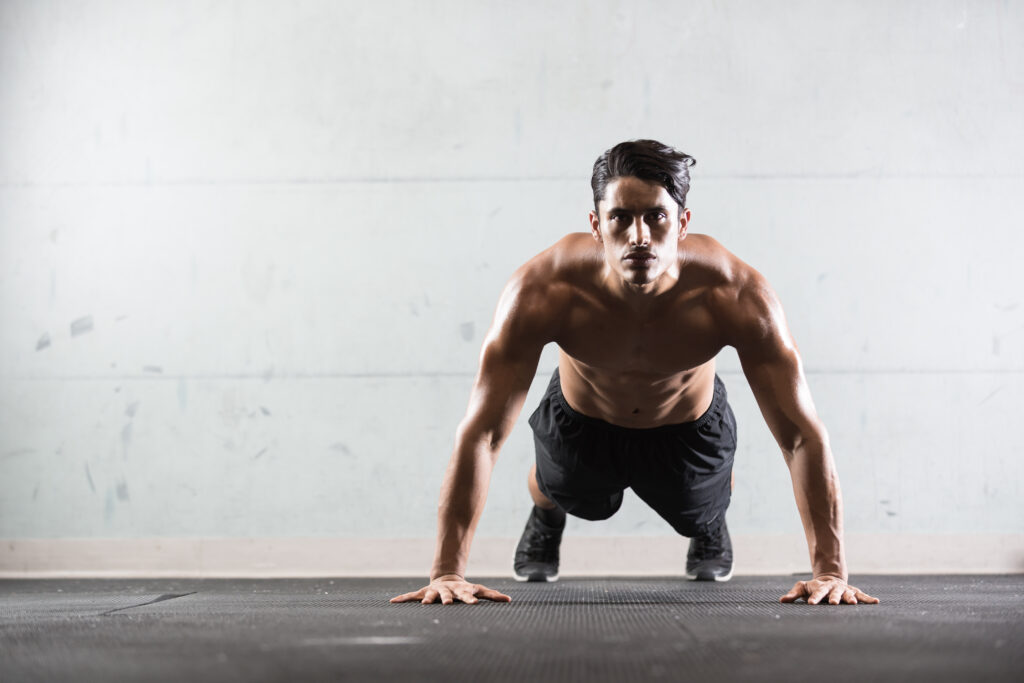So we spoke to Men’s Health Fitness Director Todd Liubinskas who gave us the low down on figuring out the right pair for your favourite workouts.
When you’re squatting
No one likes leg day. That we can all agree on. So when you’re spending time under tension on the squat rack, you want to make sure you’re efficient. If you want to get the most out of your workout, opt for a hard sole and an elevated heel. Having a slightly raised heel will increase your squat depth while improving flexion in the ankles, says Liubinskas.
“Generally, when we are squatting, we require ample dorsiflexion – the backward bending and contracting of your foot. Dorsiflexion occurs in your ankle when you draw your toes back toward your shins. You contract the shinbones and flex the ankle joint when you dorsiflex your foot,” he tells Men’s Health.
“The more flexion we have in our ankles, the better our chance at a good squat.”
Our pick: Adidas NMD_R1 Shoes
When you’re deadlifting
One of our favourite compound movements, the deadlift is the perfect exercise to build size. But wearing the wrong pair of skates can make the lift far more difficult. A flat heel will lessen the distance from the ground helping you move the weight less to lock out while also improving our stability.
“When we deadlift we want to connect to the ground with our entire foot,” explains Liubinskas. “Having maximum floor connection is paramount to maintaining a stable position for the deadlift. If we have an arch in our shoe, it impacts the full connection to the floor – not ideal for lifting a heavy weight off the ground.”
Alternatively, Liubinskas recommends going barefoot. While it doesn’t offer the same support, it’ll certainly replicate the feeling of a flat-soled shoe.
Our pick: UA TriBase Reign 2 Training Shoes
When you’re running
Exercising outside the gym requires a completely different type of shoe. Instead of a hard bottom, runners use cushioning materials like foam to absorb the impact from your feet hit the pavement. This is both important for injury prevention while also providing a springboard for every stride.
Liubinskas emphasises the importance of having a shoe with shock absorbing qualities.
“Using a shoe cushioning during a cardio workout reduces vibration through lower limb muscles in the case of running, jumping, and any other cardio-based workout. Less vibration in our muscles will allow you to go longer without fatigue,” he notes.
“If we are fatiguing in workouts, we are more prone to injury through poor form. When are are pushing through a cardio workout with our bodies in a compromising position, you’re risking form for speed – this is not ideal and over time will lead to an injury.”
Our pick: Nike React Infinity Run Flyknit
When you just need a shoe for everything
Okay, so you’re not a marathon runner nor an Olympic lifter – you just enjoy a bit of exercise here and there. That means, it’s not worth investing in several different pairs and you just need something that will be acceptable for all types of workout. Well if that’s the case, go for something that’s great for your foot: brands that offers support focused on how your foot naturally moves.
If your session in the weights room includes squatting or deadlifting, Liubinskas recommends a shoe that has a “flat sole for lifting, (but) also strong coverage and support through the midsole for running if needed.”
Our Pick: ASICS Gel-Quantum 90 2
So when should you lift barefoot?
Liubinskas suggests only going barefoot for deadlifting. “The benefit would be to have more connection to the floor when deadlifting,” he says. If you have tight calves and ankles, a raised heal for squatting is more important.















